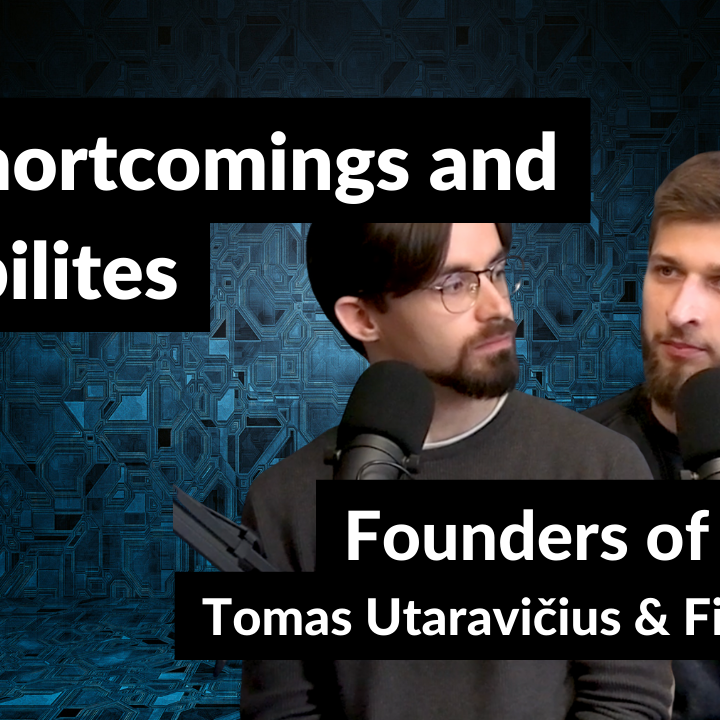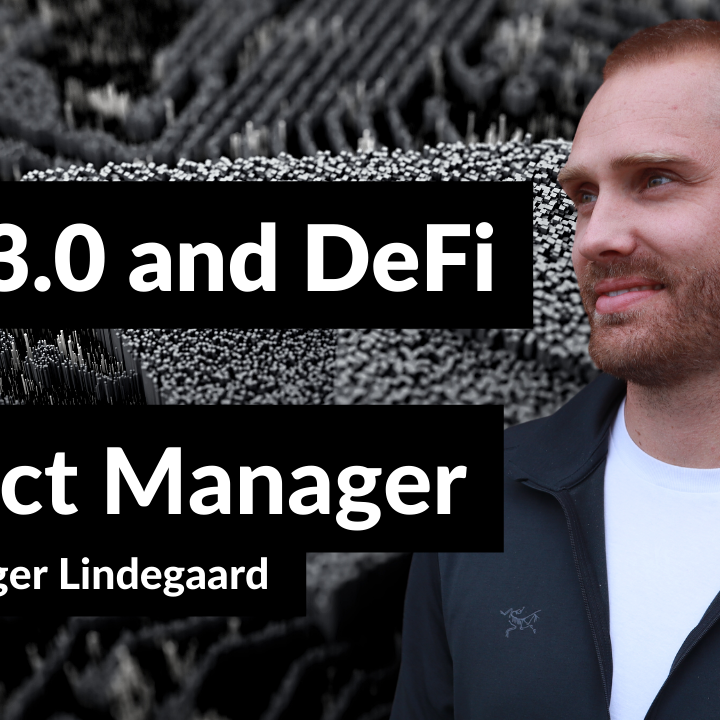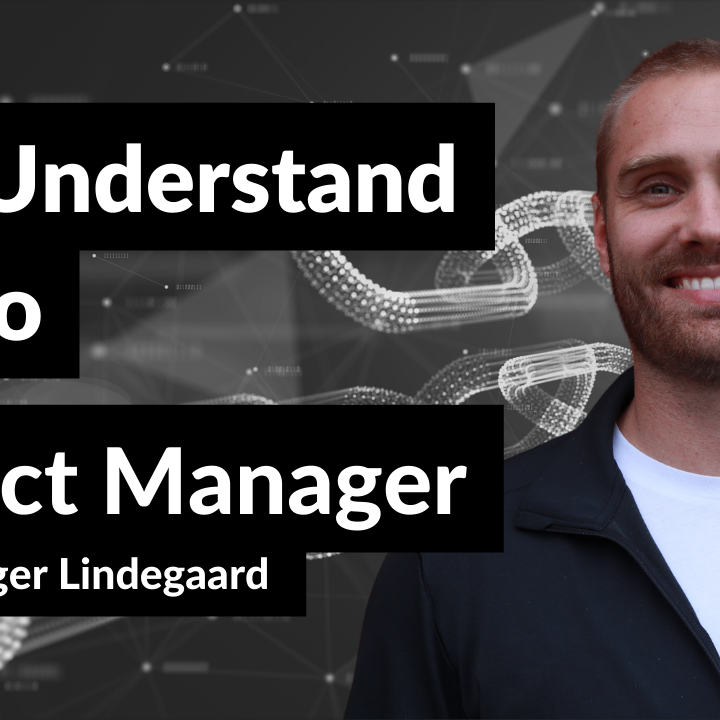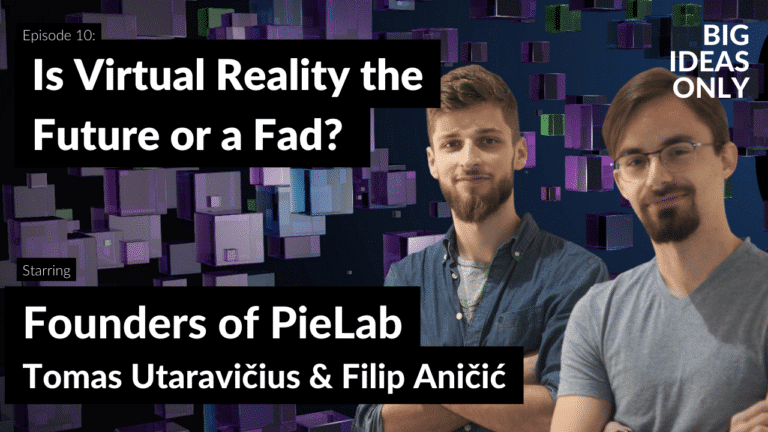About the Episode
Today our guest is Mads Fredslund Andersen, Telescope and Satellite Manager at Aarhus University, and he’ll answer all of our burning questions.
Your host is Mikkel Svold, CEO of Montanus, who will guide you through this interesting topic.
This podcast is produced by Montanus.
Link up with Mads Fredslund Andersen
Link up with Mikkel Svold
Listed below are the most essential timestamps from the podcast episode to make it easier for you to find the topics that interest you.
00:24 Introduction
01:24 Today’s guest
03:44 Why should we be interested in telescopes and satellites?
05:32 Why starts flicker?
07:44 Why the atmosphere can interfere with observations
10:47 What is the data that telescopes extract?
12:27 How we know what the Sun is made of
15:04 How do we measure size and distance with planets and galaxies?
20:13 How do we observe planets far away?
24:09 State of the art telescopes on Earth
26:11 What does Mads expect from the James Webb Telescope?
28:24 What stargazing tells us about the past
31:08 What future research does Mads look forward to?
32:43 Outro
Recommended
Mikkel:
Hello, and welcome to Big Ideas Only. Once again, this podcast is brought to you by Montanus, which is a company where we specialize in creating and producing high quality content for marketing departments in highly technological companies.
Mikkel:
I’m Mikkel Svold, and in this episode, we are going to zoom in quite a lot, because today we’ll talk about some of the tools and equipment that makes it possible for us to understand the universe. We’re going to talk about satellites and we’re going to talk about telescopes and all the things that are in between, I guess.
Mikkel:
Time and time again, I’ve been quite astounded about what we can see many light years away and how we can interpret that data coming in. And I simply don’t know whether it’s… Are they pictures? Are they data. And what kind of form and pictures are data and all this? So we’ll dig into some of that. And to answer some of the questions, we’ve once again invited Mads Fredslund Anderson into the studio. Welcome, Mads.
Mads:
Thanks.
Mikkel:
Mass is, like I said in the last episode where he also was guest, Mads is a telescope and satellite manager at the Department of Physics and Astronomy at Aarhus University in Denmark. And Mads, I know that we talked about this in the last episode, but for listeners who are just jumping in now, can you just give me a short recap of what you do? Just very briefly, what is your role and what you do, and why did you end up in this line of work? We talked about it before we turned on the microphones, but yeah, how did you end up here?
Mads:
Yeah, I actually thought I should be a high school teacher when I studied physics and mathematics at the university. But along the way, I thought let’s try some courses in astronomy and I was immediately picked up by that and thought that was really interesting. And just by coincidence, I was offered a position as software developer afterwards at the Institute, which came easy. I didn’t have much courses in software development, but the logical way of thinking is part of the mathematical way and physics. So it came easy and that’s actually what I still do today a lot, is software development and making sure that our telescopes and satellite can operate and that comes highly down to software development.
Mikkel:
And why is that? Because when I think of a telescope, I think of that the tripod with a, basically, a long binocular on it.
Mads:
Yes. Yeah. There are still some of those left, but many telescopes-
Mikkel:
I can buy them in the store here.
Mads:
Yes. Many of the professional telescopes are actually either semiautomatic, fully automatic or robotic as some of ours are. So they run fully by software. No one sits at the telescope during night. It observes given the conditions that can be weather and so on, whether it should observe or not. So purely software that checks these things and reacts to the conditions.
Mikkel:
And that software is what you write, the software? And I guess also help control some of the telescopes.
Mads:
Yeah.
Mikkel:
And I think we should dig into that a little bit later, but before we do that, I think for the general public and me, I think some of the other topics that we’ve touched upon, life and space, the sun, also last episode, we talked about the solar system as in a general and in a closed term, those are for me, at least obviously interesting somehow, because they’re just fascinating in themselves, but why is it that it’s also interesting to look at and to understand telescopes and also satellites that we are also going to talk about? Why is that interesting in that sense? Because I don’t think that’s necessarily interesting to the general public and me.
Mads:
Well, the telescopes are just in principle, just a tool to investigate these other topics, as you say. Without telescopes, we would not know a lot of the stuff we know about our close solar system, the neighborhood around in the Milky Way and even beyond. So without telescopes, we would not see these things. We need the telescopes. So that’s a reason.
Mads:
Satellites has many different purposes. There are the facts that we get extra TV channels from a satellite, or we can get the GPS system. We can have monitoring of the Earth, and we can have all kinds of stuff with the satellites for our common interest. But we can also use satellites with telescopes for other purposes, because then we are outside the atmosphere of the Earth which gives us access to different kinds of data.
Mikkel:
And then why is that?
Mads:
It’s because the earth atmosphere absorbs light in different wavelengths. So we of course know that the visual part of the electromagnetic spectrum is open. So the atmosphere is open, you can say, in that area. But in some of the others, the atmosphere actually blocks the light. So we can’t see through the atmosphere with these wave length. Then we can send the satellite into space and do it from there.
Mads:
And there’s also other effects. You know that the star flickers, when you look at it with your eyes. This flickering is because the light path changes a bit because of the atmosphere.
Mikkel:
Okay. So the flickering is not because of solar winds or something that happens on the star or on the sun?
Mads:
No.
Mikkel:
Is this the same with the sun? Because obviously it’s a lot closer, or is that also caused by activities at the actual sun? Is it also just atmospheric stuff?
Mads:
For the sun, it’s a bit different because that has a huge angular size on the sky. So it’s not the same. Actually, I remember growing up and the first thing I was taught about stars and planets was that you could tell the difference by looking at them and how much they flicker. So planets in our solar system doesn’t flicker that much because they have an actual size on the sky. And therefore, you would not see this effect that much, but stars are point sources and therefore, the effect gets larger.
Mikkel:
And a point source, what does that mean?
Mads:
It means even though you had the best telescope, almost for all the stars, it would still just be a small dot, would not be able to resolve-
Mikkel:
You can’t really magnify it?
Mads:
Yeah. You will not resolve that there’s a surface like for our sun, for instance.
Mikkel:
Okay. That’s really cool. I didn’t know that. Okay. So flickering stars is basically just the atmosphere messing with you?
Mads:
Yeah.
Mikkel:
Okay. So, and that also makes sense then to lift your binoculars above the atmosphere?
Mads:
Yeah. If you want to measure some specific details where this flicking is a problem, then you would go outside the atmosphere. There’s also a stuff where you don’t really care. It will just mean that you will lose some light. But if there’s other stuff in the light that you want to analyze, then it doesn’t matter, then you can stay on ground and you can use telescopes instead, which are cheaper.
Mikkel:
Okay. Yeah. Because I was wondering, is there any difference between telescopes and space and how they operate and telescopes on earth and how they operate?
Mads:
Yeah. Well, in the basics of a telescope is fairly simple. You just need a surface or… So in the good old, the first telescopes were lenses. They have a restriction of how large they can be before they start to be not able to produce the best images, as you could say. So gravity, because they gets too big, they gets too heavy, and it’s difficult to make sure that the image is sharp. So after the lenses, we started building reflective telescopes. So we had a mirror instead, so a curved mirror that could focus the light.
Mads:
A very basic principle is that you get a large area of collecting light instead of just your eye, for instance. The larger, the bigger magnification or the more amount of light you can detect, so the faint objects you could see. That principle is still the same.
Mads:
Nowadays, the technology has been helping us making even sharper images by, for instance, being able to correct for the curvature of the image, or of the mirror, not being perfect. You can correct the mirrors a bit using either active optics or you can do it slowly, but you can also have telescopes that use adaptive optics where it’s on the time scales of this flickering in the atmosphere. So you can actually correct for this small flickering by perturbing the mirror to correct for it, which is amazing. And then you can get really sharp images, even with large telescopes from the ground.
Mikkel:
Yeah. Because the sharp do the pictures so that the… Well, yeah. The pictures that we see, are they better from space telescopes, satellite telescopes, or are they better from ground-based telescopes?
Mads:
They are better from space. Usually, they are better from space because you don’t have the atmosphere.
Mikkel:
Okay. That makes sense. And then now I’m imagining, I said also, just before I said the picture from a telescope, so I’m imagining basically a picture like the one I take with my iPhone. And is that actually what you get? Is it a picture or is it something else, when you get the output from the telescope?
Mads:
Yeah. For some, so a telescope is one part of your observatory, let’s say. Usually, you would have an instrument connected to it. So, the light from the telescope is just… The telescope just collects the light and then puts it into your instrument. And the instrument could be a camera, as you say, to do simple images. Simple means that you still have more information about how many photons, for instance, you collected, and you can use filter. So, you select okay only in a small part of the visual light, for instance, red colors compared to green colors or blue colors or something like that.
Mads:
But you know actually how much light you got. I’m not sure you… Of course, for a camera in your phone, you want to see the contrast, but how much that actually is, you might not care. But in astronomy, we also detect how much and compares to, for instance, if we observe a staff for a long time, and see a change in how much light it sends.
Mikkel:
Okay.
Mads:
But then we can also have other instruments, for instance like a spectrograph where we actually measure how much light comes at different wavelength. So we send the light through a spectrograph and then out comes a rainbow, and then we see how much blue light. And it’s not only blue, it’s then for every wavelength. So all the-
Mikkel:
So it’s every shade of blue, basically?
Mads:
Every shade of blue. Yeah.
Mikkel:
Yeah.
Mads:
And then we can see details in the spectrum that tells us a lot about the composition of the stars, can even measure some effects that movements of the star will tell us. For instance, if there’s a planet around the star, we can see in this… Well, if it’s clear, a clear signal, then we can see the changes in this spectrum.
Mikkel:
And yet you say that you can tell what the star is made up of basically from the spectrum. But can you give an example of how that actually works?
Mads:
Yeah. So in the outer layers of a star, in the outer atmosphere, there’s molecules and atoms, and these are made up of nucleus and surrounded by electrons.
Mikkel:
Good old physics.
Mads:
Yes.
Mikkel:
Yeah.
Mads:
And these electrons are in shells, we say. So they have specific energies. And if they match light coming from the star, it can absorb some of the light. Then it’s re-emitted to some random direction. But with that specific wavelength or energy, it will for us, see… We will see it as there was less light there. Means that some of the light was blocked at specific wavelength. This is the fingerprints of the atoms and molecules that are in this star. So we will see some missing light in the spectrum, which then tells us-
Mikkel:
Yeah. Okay. So you can decode from what light is missing, you can decode what atoms the light had hit on its way?
Mads:
Exactly.
Mikkel:
And therefore know what it’s made of.
Mads:
Yeah.
Mikkel:
Well, what atoms it were. Yeah. Okay. I think that makes sense to me because it also answers one of my questions, is that, how do you know what you’re actually looking at? And I’m thinking, how do you know when you’re pointing a telescope, either a space-based telescope or a ground-based telescope. When you’re pointing a telescope, how do you know the size of the star?
Mikkel:
Because you say that when you basically point it at a start, it’s still just a dot. So how do you know how big that star is? Because people talk about, “Yeah, this star has this and this size,” but how do you know if you can’t observe that? And also the same question, how do you know how far away it is? And again, those two are also connected because it could also just be a larger star, but further away, or a smaller star closer by? Does that question make sense?
Mads:
Yes. So there are different ways of measuring, for instance, the distance. For the closer star, we would actually use that earth, that travels around the sun, which gives us a simple geometry, gives us a baseline of two astronomical units, 150 million kilometers, times two. And then if we observe a close by star, it will-
Mikkel:
And the 150 million kilometers, that’s the distance from earth to the sun?
Mads:
Yes.
Mikkel:
So, that’ll be the radius of basically the circle?
Mads:
The orbit.
Mikkel:
The orbit, yeah. Okay.
Mads:
And then if we observe a close by star, it will look as if it’s at some fixed position compared to background stars. When we are at one side of the sun, then we half a year later, goes to the other side, it will actually looks it has moved compared to the background stars with some angle. And if we can measure that angle and it’s large enough and we know the baseline, then we can determine how far away it is. So that’s what we do for the closer stars.
Mikkel:
And that’s basically when we learned about how to calculate the length of a triangle? That’s the same?
Mads:
It’s very simple geometry. Yeah.
Mikkel:
Okay.
Mads:
And then for other distances, then we can use some stars that pulsate. They change in the amount of light they omit based on some effects in the star. And the amount we measure can then be compared to how much light it actually was supposed to send. And if we can measure that difference, then we can say how far away it is. So how much do we get, and how much was it actually radiating? So that is a different step on the distance ladder, we say. And then there’s other ways of detecting stars further away.
Mads:
So that’s the distances. Then there is how big the star actually is. And it’s, as you say, it’s not very easy to tell because we can’t really resolve the angular size on the sky. So we have to have other means of detecting how large they are. One is actually comparing a lot to what we talked about in last episode with earth, how we tell what’s inside the earth, is these waves that comes from earthquake.
Mads:
Many stars oscillate, or pulsate on a regular basis. The sun does it as well. These oscillations are again, wave that travels into the star and will tell us a bit how-
Mikkel:
So those oscillation are basically earthquakes happens… Well, earthquakes. They’re not star-quakes, I guess.
Mads:
Yeah.
Mikkel:
Okay.
Mads:
And as an music instrument, the waves or the sound, we can measure. It comes with the size. So a big drum sounds deeper in sound as compared to a small one, completely the same with small stars.
Mikkel:
The wavelength that we are now talking about, are they also sound, or is that light waves, or is it something else?
Mads:
The waves that travels into the star is sound waves, or can be explained by sound waves. But what we measure is actually this change in the structure of this pattern, in the spectrum, we get. So the missing light from the atoms in the star moves around in the spectrum, if the stars is moving towards us or away from us. So we can measure stars surface oscillating by this effect, its radial velocity effect.
Mikkel:
Okay. I’m not sure I completely understand that, but I hope some of the listeners do, because I want to move on to another question, but it’s still within the same sphere. And it’s now, so you have the stars that you look at. And basically no matter how much more or less you magnify it by the means possible right now, the technology possible at the moment, no matter how much you magnify these, they’re still just basically a dot.
Mads:
Yes.
Mikkel:
And that’s the star we are talking about. How do you see a planet? Because a planet is, what, a millionth of size of the star. So how do you see that planet? How do you know that there are planets around other stars?
Mads:
The most used way of detecting exoplanets, or planets outside our solar system is by finding the fingerprints of the effects this planet puts on the star. So it’s not that we can see the planet. There are few cases where we can actually see the reflected light from the star of the planet. But that’s rare. Usually, it’s that we see an effect on the star. That can only be caused or explained by a planet.
Mikkel:
So that effect is that basically, I’m imagining when the planet orbits in front of the stars. So they’ll basically create a shadow.
Mads:
Yes.
Mikkel:
Is that the shadow that we see or-
Mads:
Yeah. That is one of the most used ways, is where we see this dip in the amount of light we measure from the stars. So we measure how much light does it omit constantly with time. And if there’s a periodical dip, then it’s most likely a exoplanet.
Mikkel:
And just before we move on to looking into the future and the future of telescopes and satellites, I just want to get some idea of the scale that we are operating on here. So how big is that dip? How sensitive does these telescopes need to be in order to basically give us some result?
Mads:
So the combination here is the telescope with a detector. So it has to-
Mikkel:
Or the spectrograph.
Mads:
Or the spectrograph. The spectrograph, I will just come back to that in a second.
Mikkel:
Okay.
Mads:
But for the shadow effect, it’s the largest planet will cause a dip of 1%, maybe of the light that we see. But if you want to go down to Earth-size planets, then it’s much less. So you have to have a good telescope with a very good detector. And then there’s all the noise that comes from different sources that you need to know about.
Mads:
But the spectrograph, I’ll just come back to this, the radial velocity effect where it’s the light that is sent from the star will change in color. We can’t see it by eye, but we can measure it.
Mads:
It’s the same effect as if you have an ambulance traveling towards you and you hear the siren. When it travels towards you, it will sound different from when it travels away from you. It’s that exact same effect on the light that a star sends in our direction, in the radial velocity direction towards us, if it is on towards us or away from us. And we can then see this wobble effect that a star will have, if it has a planet around it, they will go around the common center of gravity, not the sense of the star only. So it will have a small effect on the star, which then wobbles. This effect, we can measure.
Mikkel:
Okay. That makes sense. No, I think that makes sense because that’s when, basically with the ambulance analogy, that’s when the planet’s coming towards us, it has one sound. And when it crosses over and goes, well, back around the star, it has another.
Mads:
It’s not the planet. It’s the star.
Mikkel:
Oh, it’s… Okay.
Mads:
And so the star, because of the planet going around, the star will also move a bit. But it’s not moving in the same-
Mikkel:
No, because they-
Mads:
… orbit as the planet, but…
Mikkel:
Yeah, I think I get it now. I get it now. Maybe the listeners are a bit sharper than me, but at least I get it now, I think. I think now, having established what a telescope is and how it’s not just lenses stacked on top of each other anymore, big lenses. It’s more mirrors that are curved and all this. And just, I have one, actually one last question. I know that I said that before, but the largest telescope on earth, how big is that?
Mads:
It’s around 10 meter in diameter for visual light. So there’s radio telescopes, which measures in different wavelength, but the visual, which can be much large, but for visual light, it’s around 10 meters.
Mikkel:
Okay. Okay, nice. And now, let’s try to move on to what happens to telescopes and also to satellites and satellite telescopes in the future. Because just before turning on the microphones, we talked about the James Webb telescope, which I think it was launched in January and then it’s maybe operating now. I can’t remember.
Mads:
Yeah. It had to go to this specific points called Lagrange point two, where there’s a stable spot, where it can settle quite nicely. So it had to travel there, which is a very long distance. I think it’s 1.5 million kilometers away from earth.
Mads:
So now it’s there and it started… There’s a period where it needs to test that everything is operational and so on. And then I think in just in a month or so, the first data will arrive.
Mikkel:
Because I remember the news were out that it had arrived at that spot, at the location. And it had also unfolded without any issues, which was a big deal because of 300 unfolding parts that needs to just work perfectly.
Mads:
Yeah.
Mikkel:
Yeah. So you said, before turning on the mics, you said that, well, basically just a few months ago, you would talk about the James Webb telescope, but something that was in the future. But now that it’s, I guess, in the past somehow, but what do you expect from the pictures that we get now, and also this telescope? Is this the future telescope, or is it just the stepping stone?
Mads:
I’m sure that there will, in the future, be new, amazing telescopes. This is designed to do specific stuff that will hopefully answer some of our very good questions. It is made to look at specifically infrared wavelengths. So it’s made of gold. It has a gold reflecting surface to be able to measure as much light in this infrared as possible.
Mads:
This means that we are looking at, for instance, the first galaxy formation back in history. So when we look into the universe, we actually look a bit back in time because the light that even the closest stars has emitted, it has taken time to travel to us for the closest neighborhood… You know the light year is the distance. Light travels for-
Mikkel:
For one year. Yeah.
Mads:
In one year. So when we say our closest neighbor, Proxima Centauri is four light years away, means that the light the star sent towards us has taken four years to arrive.
Mikkel:
Yeah. So when we look at that star today, it’s the light was basically produced four years ago?
Mads:
Yes, exactly. So when we say we look even further away or very early galaxies that are very far away, it’s also looking long into the past. So it’s telling what’s happened in the early universe.
Mikkel:
And the further away, the further back in the past you also look.
Mads:
Yeah.
Mikkel:
That is quite fascinating actually.
Mads:
Yes.
Mikkel:
I think, yeah. And what do you expect from the James Webb telescope? This infrared, what’s that going to provide us with?
Mads:
I think James Webb will… it will answer some of the questions that they proposed, but the most amazing stuff-
Mikkel:
What are those questions?
Mads:
So for instance, how did the early universe look like
Mikkel:
Okay.
Mads:
And what made the first galaxies appear? And what happened? But also putting more emphasis on our model or our theory of how the universe actually evolved, for instance, the Big Bang model and so on. But it’s also intended to look at very specific selected exoplanets to maybe detect new things that we haven’t seen before on these planets. That can be things that tells us more about how the new… so other star systems, planetary system has come to be or how they have evolved with time, and so on. We still have a lot of open questions on how that is actually working. So maybe it will tell us more about that, and maybe even signatures of something interesting on these planets.
Mikkel:
And I just quickly wrote down. So do you expect something, some findings to be groundbreaking from maybe the James Webb or maybe some other future telescope that’s in the, I guess, near future?
Mads:
Usually, what we see when we have missions like this, it’s some of the stuff that has been proposed, why we do it and why we should do it, we get answered. But some of the most amazing stuff is something that no one thought about. So it’s something new that we will observe, new possibilities because of the new technology and the sizes of the telescope. This is, by far, the largest space-based telescopes that we have ever had. So I’m sure it will tell us something new that we don’t know what is.
Mikkel:
Yeah. Just to compare, how big is it compared to other telescopes in space?
Mads:
So the Hubble Space Telescope is, I think, 2.5 meters. This one is 6.5. So it’s much larger.
Mikkel:
With your research group, will you have time on the James Webb as well?
Mads:
Not me specifically. But I’m sure that colleagues of mine will.
Mikkel:
Yeah. Because I know that you reserve time for a specific date and time, and then you have that little room where you can do your studies. Yeah. That’s pretty cool.
Mikkel:
Now, we’re nearing the end now. And I just want to round off with, is there something that you especially look forward to within this field of study within telescopes and the development of telescopes and satellites that you look forward to right now?
Mads:
So there’s also the extremely large telescope that will be almost 40 meters in diameter, which is one of the good things of having telescopes on earth, you can build them larger and not having the expense of sending it to space. But I’m sure that will also tell us a lot new, cool stuff when it’s getting in operation. So it’s being built now in Chile. So that, I really look forward to as well.
Mikkel:
There’s just recently an old telescope, the one from the James Bond movie.
Mads:
Yeah.
Mikkel:
Was that in Chile as well?
Mads:
That was-
Mikkel:
I can’t remember the name.
Mads:
… also a radio telescope. It’s Arecibo.
Mikkel:
Okay. Yeah.
Mads:
A huge radio dish that was being decommissioned. Yeah.
Mikkel:
Okay. And it was in Chile as well?
Mads:
In South America. I can’t-
Mikkel:
South America somewhere.
Mads:
… remember if it’s in Chile or some- Could be Colombia as well. I can’t remember.
Mikkel:
Anyway, now if listeners want to follow you and what you do, I know that you’ve said this in the last episode, but just for good old sake, where can they find and follow you?
Mads:
On our Aarhus University profile page, I try to keep it updated with-
Mikkel:
Yeah.
Mads:
… all kinds of information.
Mikkel:
That’s perfect. And we’ll link to that. And that’s it for now, Mads Fredslund Anderson. Once again, thank you so much…
Mads:
Thanks for-
Mikkel:
… for joining the conversation. And to you, dear listener, if you do this podcast, do help us spread it by subscribing and sharing it with your friends and family. And like I just said, you can find the show notes with the links to everything that we’ve talked about and anything of interest resources on our website at Montanus.co and that’s .co, without the M, Montanus.co/BigIdeasOnly.
Mikkel:
And of course, now, if you’re interested in building your own knowledge center like we are trying to do here at Montanus, please do reach out to us and we’ll try to help you get going with that. Okay. That’s it for now. And thank you for listening.











